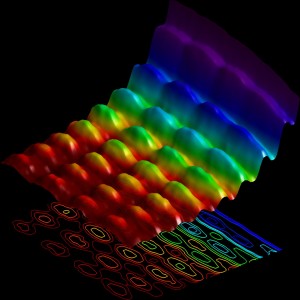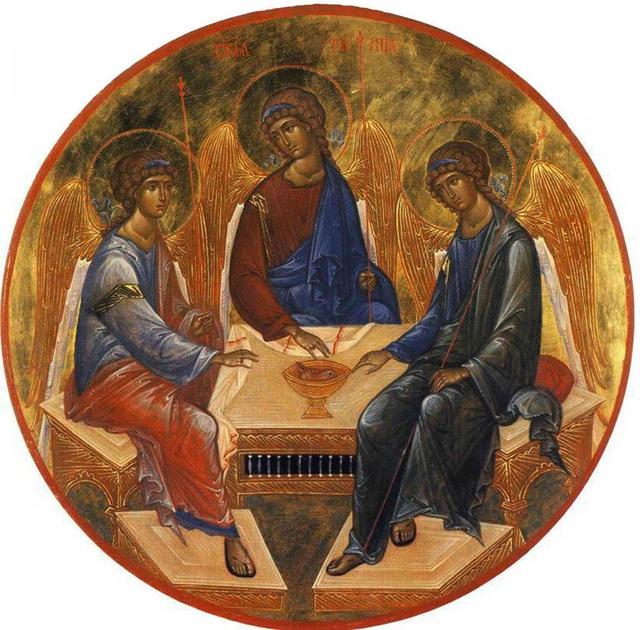Dear Brothers and Sisters,
 As a young teen I was seated in a movie theater when the power went out. The murmuring of the audience grew louder as each second in the dark passed. I found myself squinting, trying to see a way out when someone opened a door to the outside. Light poured into the theater and the murmuring, and my squinting, quickly ended.
As a young teen I was seated in a movie theater when the power went out. The murmuring of the audience grew louder as each second in the dark passed. I found myself squinting, trying to see a way out when someone opened a door to the outside. Light poured into the theater and the murmuring, and my squinting, quickly ended.
Until faced with darkness, most of us take light for granted. But without light there is no sight. We see because light upon an object moves through space, where reaching our eyes it stimulates our optic nerves, producing a signal that our brains interpret as an object in space having a particular appearance, location and movement. Understanding the nature of light has been a challenge—early theories posited light as a particle, then a wave. Today, most physicists view light as both—a wave-particle. Note what Einstein wrote:

(Wikimedia, creative commons)
It seems as though we must use sometimes the one theory and sometimes the other, while at times we may use either. We are faced with a new kind of difficulty. We have two contradictory pictures of reality; separately neither of them fully explains the phenomena of light, but together they do.
An interesting aspect about the nature of light is how darkness has no power over it. While light dispels darkness, the reverse is not true. This phenomenon plays prominently in Scripture in pointing out the nature of God (light) and evil (darkness). Note what the apostle John wrote:
This is the message we have heard from him and declare to you: God is light; in him there is no darkness at all. If we claim to have fellowship with him and yet walk in the darkness, we lie and do not live out the truth. But if we walk in the light, as he is in the light, we have fellowship with one another, and the blood of Jesus, his Son, purifies us from all sin (1 John 1:5-7).
As noted by Thomas F. Torrance in his book The Trinitarian Faith, early church leader Athanasius, following the teachings of John and the other original apostles, used the metaphor of light and its radiance to speak about the nature of God revealed to us in Jesus Christ:
As light is never without its radiance, so the Father is never without his Son or without his Word. Moreover, just as light and radiance are one and are not alien to one another, so the Father and the Son are one and are not alien to one another but are of one and the same being. And just as God is eternal light, so the Son of God as eternal radiance of God is himself eternally light without beginning and without end (p. 121).

(Wikimedia Commons, public domain)
Athanasius was making a vital point that he and others codified in the Nicene Creed: Jesus Christ shares with the Father the one being (Greek=ousia) of God. Were that not so, it would have made no sense when Jesus proclaimed: “Anyone who has seen me has seen the Father” (John 14:9). As Torrance notes, if Jesus were not homoousios (of one ousia) with the Father (and thus fully God), we would not have in Jesus the full revelation of God. But as Jesus proclaimed, he truly is that revelation—to see him is to see the Father; to hear him is to hear the Father. Jesus Christ is the Son of the Father from his very being—that is, from his essential reality and nature. Torrance comments:
The Father/Son relation falls within the one being of God, the Father and the Son inhering and coexisting eternally, wholly and perfectly in one another. God is Father precisely as he is eternally the Father of the Son, and the Son is God of God precisely as he is eternally Son of the Father. There is perfect and eternal mutuality between the Father and the Son, without any “interval” in being, time or knowledge between them (The Trinitarian Faith, p. 119).
Because the Father and the Son are one in being, they also are one in doing (action). Notice what Torrance wrote about this in The Christian Doctrine of God:
There is an unbroken relation of Being and Action between the Son and the Father, and in Jesus Christ that relation has been embodied in our human existence once and for all. There is thus no God behind the back of Jesus Christ, but only this God whose face we see in the face of the Lord Jesus. There is no… dark inscrutable God, no arbitrary Deity of whom we can know nothing but before whom we can only tremble as our guilty conscience paints harsh streaks upon his face.
This understanding of the nature (being) of God, revealed to us in Jesus Christ, played a critical role in the process of officially determining the New Testament canon. A book was not considered for inclusion in the New Testament if it did not uphold the essential oneness of the Father and the Son. Thus this truth and reality served as a key hermeneutical principle by which the content of the New Testament was determined for the church.

(Wikimedia Commons, public domain)
Understanding that the Father and the Son (with the Spirit) are one in being and doing helps us understand the nature of grace. Grace is not a substance created by God to stand between God and humanity but, as Torrance notes, “the self-giving of God to us in his incarnate Son in whom the Gift and the Giver are indivisibly one God himself.” The content of God’s saving grace is a person, Jesus Christ, for it is in, through and by him that salvation occurs.
The triune God, who is eternal light, is the source of all “illumination,” both physically and spiritually. The Father who called light into existence, sent his Son to be the light of the world, and the Father and the Son send the Spirit to bring illumination to all people. Though God “lives in unapproachable light” (1 Timothy 6:16), he has revealed himself to us by his Spirit in the “face” of his incarnate Son, Jesus Christ (see 2 Corinthians 4:6). Even if we must, at first, squint to “see” this stunning light, those who embrace it soon find the darkness has been driven far away.
Basking in the light,
Joseph Tkach
PS. If you’d like to learn more about the incarnational Trinitarian roots of the Nicene Creed, go to http://thesurprisinggodblog.gci.org/p/nicene-creed.html where you’ll find an excellent article by Ted Johnston summarizing key points about the Creed from Torrance’s book The Trinitarian Faith.


